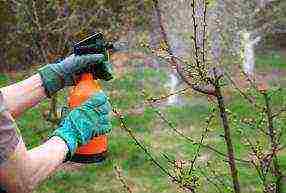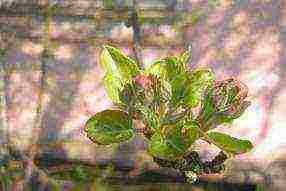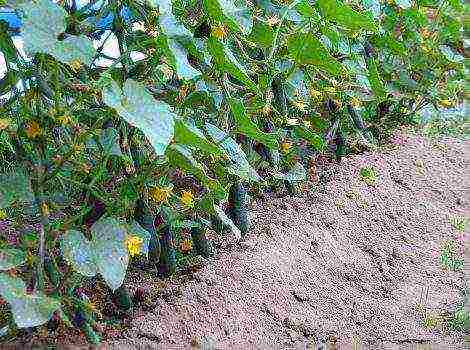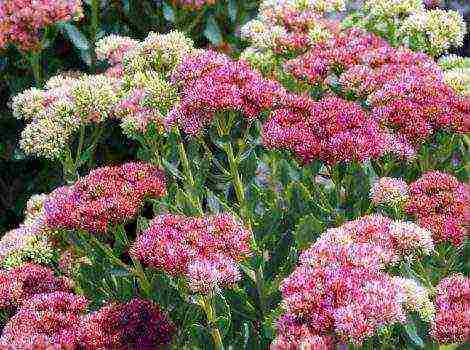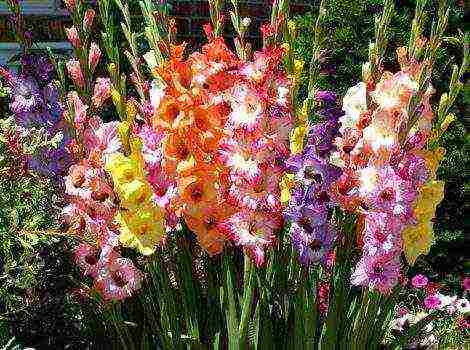Content
- 1 How to choose an apple tree for your garden?
- 2 Nuances of growing late apple trees
- 3 Late varieties for central Russia
- 4 Frost-resistant varieties for the Urals and Siberia
- 5 Winter apple trees for Belarusian gardeners
- 6 Late apple varieties of Ukraine
- 7 Table: top 10 longest shelf life apples
- 8 Gardeners reviews
A favorite fruit tree wherever the climate is suitable for growing it is the apple tree. Early, middle, late, sweet, sour, with a spreading crown and columnar, apple trees rank first among fruit crops.
Apples on the branches of a tree
Moderate watering and climate are sufficient for apple trees, without a lot of bright sunny days. They are unpretentious in care. In cultivated form, fruiting begins in the 4th - 10th year and yields are formed up to 40-50 years of age. Apples are loved by every family and are needed for a long period. How to select the best of the best, what features to pay attention to when choosing varieties?
How to choose an apple tree for your garden?
In order to select an apple tree for your garden that is suitable in all respects, you need to study the varieties bred for the region / district and pay attention to the following characteristic features.
Winter hardiness of the variety
The ability to withstand the most severe frosts, typical for the area, and successfully withstand spring return frosts, autumn sudden drop in temperature and other weather disasters. The winter hardiness of the variety in apple trees is not brought up. Cold resistance is passed on from parents at the genetic level. Therefore, regardless of the region, you always need to buy zoned apple varieties for planting. They are bred for certain climatic conditions, are less affected by pests and less infected with diseases.
The onset of fruiting and yield
For the home, it is better to buy early varieties of apple trees that form the first harvest in the 2nd - 4th year. Medium-fruited crops form in the 5th - 8th year and late-fruited ones - in the 9th - 10th - 12th year.
Productivity. It is advisable to select varieties of apple trees with annual fruiting.
Ripening period of apples
For a personal plot, it is necessary to select varieties with early, middle and late ripening so that summer varieties are replaced by autumn ones, and those by winter ones.
Summer varieties of apple trees are harvested in late July and early August, depending on the region. They reach biological ripeness for mass consumption of fruits, but they must be immediately used for food.
Mid-season apples are harvested in technical ripeness in September. When choosing varieties, it is necessary to pay attention to the fact that some autumn varieties need to ripen after harvest in order to acquire their characteristic taste and aroma.
Late apples are usually harvested in late September - early October. In addition to late and mid-late, there are late-ripening varieties that are harvested at the end of October or before the onset of frost. Such varieties are immediately laid for storage. Their fruits reach their maximum ripeness gradually.
Apple tree of autumn variety
Keeping apples
From varieties of apple trees of different ripening periods, varieties with good keeping quality should be selected according to the variety catalog.At the same time, pay attention to the fact that summer varieties have a shelf life of 1-3 weeks, but some lose their quality indicators after 6 days (darken, rot, etc.). In autumn varieties, 30-60 days are considered to be good keeping quality, and in winter varieties, at least 3-4 months. The best winter varieties of apples can be stored (if appropriate conditions are created), retaining all qualities, until the end of March - May and even until the next harvest.
Disease resistance of apple trees
You should choose a variety of apple trees with high resistance to diseases, especially to fungal (scab, rot and others) and pests. For "high immune" varieties, fewer treatments will be required, which will reduce the time and care costs in the future and will allow you to get harvests of ecologically healthy fruits.
Crown shape
For a private garden with a small area, it is more practical to choose a variety of apple trees with a small or medium, compact crown habit. Particularly advantageous in this case are columnar varieties that form a crop on the central trunk and do not have a crown in the conventional sense. A spreading, loose crown will be good in a resting corner, where it creates the necessary shade for vacationers, but in the garden it will occupy a large area and oppress other cultures.
Taste is not in the last place
When choosing a variety of apple trees, be sure to pay attention to the quality indicators of the fruits: sweet, sour, juicy, with dense or loose pulp. Sweet varieties contain sugars from 10% or more.
For example: Start and Bolotovskoe 10.5%, Kandil Orlovsky 10.3%, and Rozhdestvenskoe 11.1%. The fruits of these varieties contain up to 0.4% free acid.
Pay attention in the characteristics of varieties to such an indicator as the sugar-acid coefficient. With an indicator of 25% and above, apples are sweet (acidity is not felt in the aftertaste). At lower rates (10-20%) - the taste of the fruit is sour, like lemon. From 20 to 25% the taste is felt as sweet and sour, sweet and sour with a different aftertaste.
Here are the ten best apple varieties for the middle lane.
For a list of the best apple varieties for the middle lane, see the next page.
The State Register includes about 400 varieties of apple trees. And if you add local, new or outdated, but still living in our gardens, the list will be impressive. What are the most common varieties?
Each region has its own favorites. We have compiled a kind of top-5 of the most popular varieties for central Russia with different ripening periods. We also offer an alternative - less common, but noteworthy varieties.
We advise you to remember them when the time comes to replace the old apple tree. A very good way to replenish the assortment of your garden is to plant new varieties in the crown of already proven old-timers.
Number 1. Pouring white - an old local early summer variety, the very first apple of the season, ripens from the beginning of July.
Dessert tender friable sweet-sour pulp is to many to taste, fruits weighing 80-110 g. The variety is distinguished by high winter hardiness. Fruiting is sharply periodic. Years with a bountiful harvest usually bring problems - apples are stored for no more than two weeks, they have poor transportability. Scab attacks trees, especially in wet years.
Number 2. Melba is an unsurpassed Canadian variety in popularity.
It belongs rather to late summer or even early autumn, the fruits ripen in mid-September. He earned national love with his sweet and sour taste, his snow-white juicy pulp has a strong pleasant aroma. Fruits are medium (weight - 80-120 g). Apples are stored for 1-2 months. The tree is winter-hardy, fruitful, with high self-fertility. The disadvantages of the variety include the frequency of fruiting and the susceptibility to scab. The fruits do not ripen at the same time and quickly crumble.
Summer varieties - an alternative
Arkadik is an early summer domestic variety (VSTISP, Moscow), capable of competing with southern summer varieties. Juicy, sweet with barely noticeable sourness, the pulp has a strong aroma.
Fruits are medium and large (weight - from 80 to 180 g). The tree is vigorous, fast-growing, winter-hardy. Grows reliably in the Moscow region and northern regions of central Russia. The variety is scab resistant.
Mantet is a late summer variety of Canadian origin.
Creamy (pink under the skin) tender juicy pulp with a sour-sweet taste and strong aroma. The fruits are of medium size (about 130 g), they do not ripen at the same time, their consumption period is about a month. The apple tree is winter-hardy, fruitful, fast-growing, scab resistant. The disadvantages include susceptibility to powdery mildew, poor transportability of fruits (stored after removal for no more than 15 days) and the frequency of fruiting.
In memory of Tikhomirov - a late summer fruitful variety (Lomonosov Moscow State University), ripens in the second half of August.
Fruits are large (weight - 100-150 g), sweet and sour. The pulp is juicy, creamy, of medium density, prickly, fine-grained. The apple tree is medium-sized, begins to bear fruit in the 6th year. The variety is self-fertile, scab resistant, winter-hardy.
Number 3. Autumn striped, also known as Streyfling, or even Shtrifel, is a popular autumn Baltic variety of folk selection.
Dense, tender, juicy, slightly yellowish pulp of these apples has a pleasant light wine flavor. Fruits are above average in size (weight - 120 g), ripen at the end of August, have good transportability, can be stored until mid-November. The plant is winter-hardy, productive, scab resistant. Gardeners should take into account that the tree of this variety is vigorous, begins to bear fruit in the 7-9th year.
Autumn varieties - an alternative
Zhigulevskoe is a late autumn variety created at the Kuibyshev Experimental Gardening Station.
Apples ripen in mid-September and can be stored until February. Large fruits (weight - 150-200 g) with creamy dense juicy sweet-sour pulp with a pleasant aroma. The tree is winter-hardy, medium-sized, fruitful. The variety is self-fertile (the best pollinators are Antonovka ordinary, Cinnamon new), weakly resistant to scab, prone to periodic fruiting.
Orlovskoe striped - an autumn variety (All-Union Research Institute for Breeding of Fruit Crops, Orel), ripening in early September.
The fruits are stored until early December. The pulp is white with a creamy shade, fine-grained, tender, very juicy and aromatic. The taste is sweet and sour. Fruits are large or above average size (weight - 130 g). The trees are fruitful, fast-growing, with regular fruiting. The variety is relatively resistant to scab, average winter hardiness (for the conditions of the Oryol region - above average).
Number 4. Antonovka ordinary is an old local Central Russian variety of late autumn or early winter period of consumption (in the State Register it is listed as early winter).
The fruits ripen in mid-September and are stored for up to 2-3 months. The pulp is juicy, coarse-grained, white, with some excess of acid (and a high content of vitamin C) and a unique aroma. The fruits are large (weight - 125-170 g). The tree is winter-hardy, vigorous, fruitful. The disadvantages include sharply periodic fruiting, poor transportability of fruits, susceptibility to scab and moth.
Number 5. Bogatyr is a winter variety created in Michurinsk.
Fruits ripen in late September - early October, can be stored until May, and have good transportability. The pulp is firm, slightly juicy, crispy, white, with a sweet and sour taste and a pleasant aroma. The fruits are large (average weight - 175 g, maximum - up to 350 g). The tree is fruitful, tall, has an average winter hardiness and resistance to scab.
Winter varieties - an alternative
Orlik is a winter variety (All-Russian Research Institute of Breeding of Fruit Crops, Orel).
The fruits are harvested in the first half of September, at which point they are ready for consumption and can be stored until March. The dense, fine-grained, very juicy pulp has a strong aroma and a harmonious sweet and sour taste. Medium-sized fruits (90-100 g). The trees are quite winter-hardy, medium-sized. The variety is fast-growing, productive, moderately resistant to scab, differs in the frequency of fruiting.
Sinap Orlovsky is a late winter variety (All-Russian Research Institute of Breeding of Fruit Crops, Orel).
The fruits are harvested at the end of September, but consumer ripeness begins in November and lasts until the end of April. The pulp is greenish-creamy, very juicy, prickly, has a good taste, a harmonious combination of acid and sugar, and a weak aroma. Fruits are medium and large in size (weight - 120-150 g). The trees are quite winter-hardy, vigorous, regular, moderate fruiting. The variety is relatively scab resistant.
The subtleties of cleaning and storage
Growing an apple crop is not easy, but it can be more difficult to preserve it. Fruits for long-term storage are harvested in dry weather, only by hand and with great care. It is unacceptable to shake apples from trees, broken fruits are not stored. They are harvested along with the stalk. Do not remove apples by pulling them down, twisting or pulling.This leads to breaking off or pulling out of the stalks and breakage of the fruit twigs.
Most apple varieties are best stored at temperatures close to zero and 90-95% humidity. At lower humidity, the fruits begin to wilt (the skin becomes wrinkled). Sharp temperature fluctuations at high air humidity lead to the appearance of moisture on the surface of the fruits, which leads to their massive rotting.
Enemy forces
Gardeners aren't the only ones who love to eat apples. One of the main enemies of the summer resident - apple moth. The main protection measures are cleaning, collection and destruction of dead bark in autumn or early spring, the use of trapping belts, constant collection and processing of carrion during the summer. Amateur gardeners often use fermenting apple juice, which, in addition to the moth, also attracts moths, scoops and other insects.
Apple blossom beetle deprives many summer residents not only of the harvest, but even of the joy of admiring the spring flowering of trees. You need to start protecting the garden from the apple blossom beetle in early spring - trapping glue belts are applied to the stem. Beetles are shaken off the branches during the period of bud swelling before the inflorescences protrude. The procedure should be carried out early in the morning at air temperature.
not higher than 8–10 ° С, then the beetles are inactive. This successfully replaces the chemical treatment against the apple blossom beetle.
The most harmful disease of the apple tree is considered scabwhich lowers the yield and weakens the tree in general. When laying a garden, it is worth choosing modern, disease-resistant varieties. The main preventive measure is cleaning the affected leaves after they have fallen from the garden; they can be burned, buried, composted. Treatment of the soil surface after leaf fall and tree crowns with concentrated solutions of mineral fertilizers with a high nitrogen content (7% urea solution or 10% ammonium nitrate solution) significantly accelerates leaf mineralization, and the dormant stage of the pathogen does not have time to form. But in years favorable for the development of scab, and on varieties susceptible to disease, it is impossible to cope with the disease without the use of fungicides.
Winter-ripening apple trees are unique in that their fruits are stored the longest and will provide your family with vitamins for the whole winter and spring. Healthy, fragrant and vibrant fruits will only be available if the seedlings have been properly selected and grown. The beginning of the search lies in the list of varieties specially bred or adapted to different regions.
Nuances of growing late apple trees
The most significant events for fruit trees are:
- Landing.
- Care.
- Pruning.
Let's take a closer look at each item.
Landing
Violation of the planting rules leads to the fact that the tree will bear little fruit or may even die. The process is divided into three important stages:
- Choosing a place and a seedling.
- Preparation of the landing pit.
- Directly landing.
Several factors will influence the choice of apple trees for your garden. To choose the right variety, you need to understand:
- the height and type of tree (tall or medium-sized, dwarf or columnar);
- ripening time of apples;
- illumination of the place under the apple tree;
- shelf life and taste of the fruit.

When choosing an apple tree seedling, you need to take into account the condition of the soil (including the level of groundwater), and the place for planting, and many other factors
If the seedling is chosen incorrectly, most likely it will simply die.
After the specific variety has been identified, they proceed to the preparation of the pit. Experienced gardeners will take care of this in advance. Recommended timing:
- for planting in autumn - July - August;
- spring - September - October.
It is better to plant any apple trees in the fall, but this is especially important for winter varieties.
After leaf fall, a dormant period begins at the top of the plant and the tree spends energy only on the development of roots. It is stocked with nutrients that freely flow to the roots with autumn rains.It is then that the apple trees take root very well. The optimal time is when the soil temperature is not lower than + 4 ° C, but the Indian summer has already ended. Long daylight hours can awaken the buds and bring the tree out of the state of biological dormancy. Therefore, most often apple trees are planted in the second half of September. The tree will take 10 to 25 days for it to take root and gain strength for the spring growing season.
The soil substrate for planting is prepared taking into account the peculiarities of the soil of the place where the tree will grow.
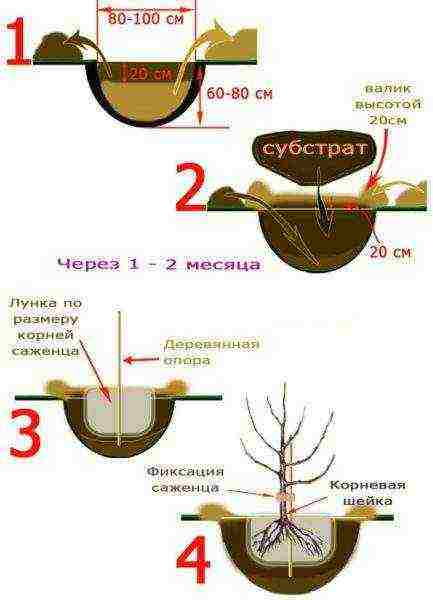
For apple trees, it is very important to properly prepare the planting site in advance and act strictly according to the given scheme
While the pit under the apple tree is infused, the earth settles. At this time, siderates are often planted, which are then simply dug up along with the soil.
When filling an apple tree seedling with a substrate, it is important to remember that the root collar should not be buried. At the end, the plant is watered abundantly and the trunk circle is mulched.
Careful preparation of the planting site is especially important for open-rooted seedlings. But regardless of whether there was a tree in the container or without, for him in the next two to three years those elements that are embedded in the substrate are very important. It is they who will give the apple tree strength for growth and proper development.
Table: timing of planting seedlings, depending on the region
If the deadlines for planting apple trees in the ground in autumn are observed, it is important to focus not only on the weather forecast, but also to follow nature. We need the last days of leaf fall.
Care
In general, winter varieties are looked after in the same way as others, but there are some peculiarities. For example, autumn spraying. From the point of view of the prevention and treatment of diseases, this is an important point in tree care. It is carried out only after the fruits have already been harvested. Late ripening varieties yield in September-October, which means that spraying should be done later. But at this time, the autumn weather comes into its own. Rain, a drop in temperature, and even more so frost will not allow such processing. Therefore, it is very important not to skip the spring spraying.
Video: pruning fruit trees for beginners
Late varieties for central Russia
The large amplitude of the average annual temperatures of the Moscow, Smolensk, Tver, Nizhny Novgorod regions complicates not only the planting conditions, but also the very choice of seedlings. But these 5 varieties will never disappoint gardeners.
- Late winter North Synap is a tall, vigorous plant with a dense, beautiful crown, shaped like a cone.

The light flesh of the Northern Sinup will surprise you with an incredible spicy-sour taste with a sweetish aftertaste, and the golden-lime color, decorated with a burgundy-raspberry blush, will delight the eye
- In early October, vigorous Bolotovskoe apple trees yield an average yield of 160 c / ha.
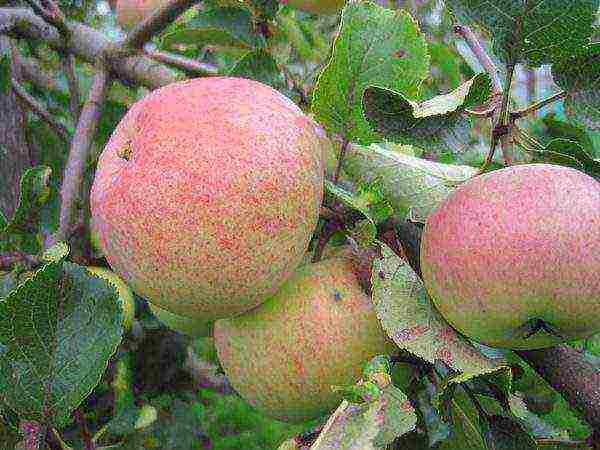
Pale red Bolotovski apples taste sour with gradually revealing sweetness
- The tall tree of the Lobo table variety has earned the love of gardeners for a stable harvest, a compact rounded crown, rapid development and growth.
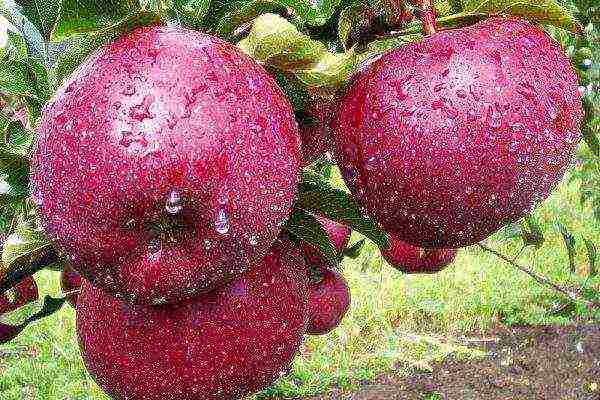
Lobo apples, sour with a characteristic sweet aftertaste, when ripe, acquire a beautiful carmine-raspberry color with a barely noticeable bluish sheen
- The recently bred September variety Imrus looks like a medium-sized tree with a rounded crown.
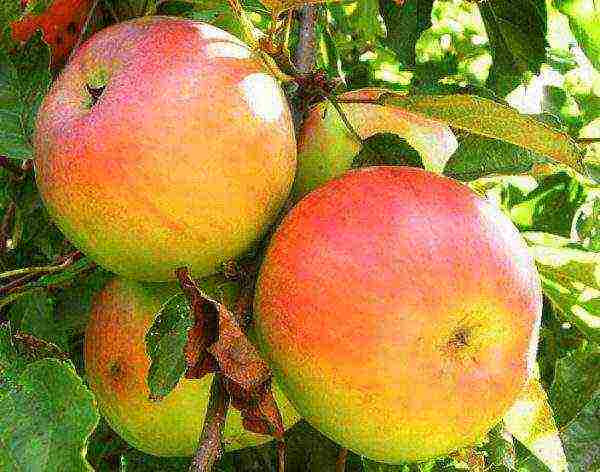
The fruits of the Imrus variety are sunny-green in color with a beautiful dark pink blush, have a sweetish taste with a pleasant sour aftertaste
- Freshness is not only a medium-sized tree with a beautiful sparse crown, but also a stable yield of 111 c / ha. The variety is late winter in terms of consumption.
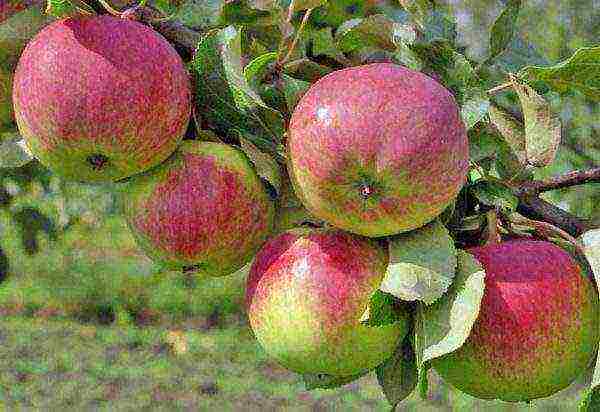
Apple trees of the Freshness variety have small fruits of a light emerald color with an unusual streaky blush of a pale red color, the taste is sweet with a pronounced sour aftertaste
Table: frost resistance, yield and other features of middle lane apple trees
Gardeners of central Russia will also be interested in varieties:
- Veteran;
- Blagovest;
- Bogatyr;
- Pepin Saffron;
- Aphrodite.
Apple trees of Moscow region
The following varieties have become the most popular among gardeners of the Moscow Region.
- Orlovskaya Zarya won the love of gardeners with its rapid development. The plant itself is medium in height and in the shape of a not very dense crown resembles an inverted pyramid.
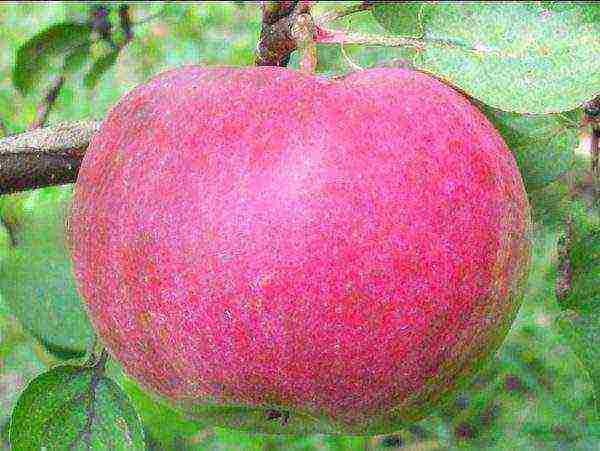
Fragrant apples of the Oryol dawn, carmine-raspberry in color, very juicy, characterized by an exquisite sweetish taste with a subtle hint of acid
- Imant is a late winter variety, a powerful tree, but medium in height. The crown of the plant is dense, conical.
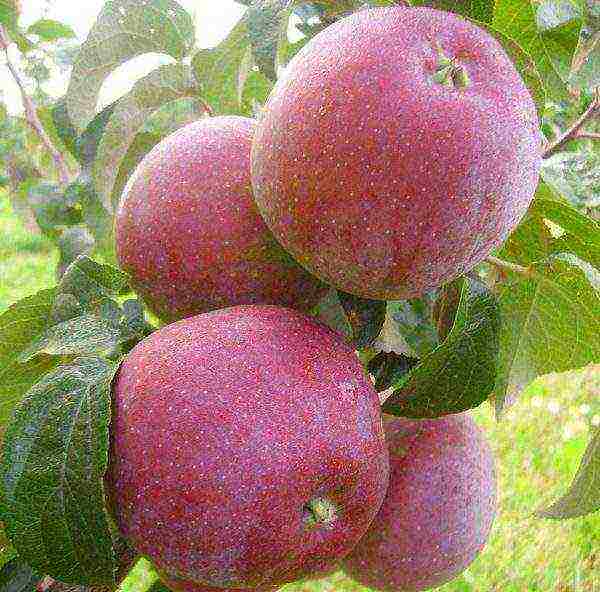
Beautiful matt apples of the Imant variety have a juicy, crunchy sweet and sour pulp
- The sun is a tree with a rounded crown, up to 3-4 meters high.

The color of the Solnyshko variety is really sunny, with a beautiful transition from light golden to reddish-pink, the taste of the fruits is sweet and sour
- One of the most unpretentious table varieties of apple trees is the incredibly productive Bogatyr. It is a tall apple tree with a wide rounded-conical crown of medium density.

Crispy apples of the Bogatyr variety have a beautiful golden-green color, a slight blush is allowed, the pulp is white, sour with an unusual sugar flavor
- The fast-growing Veteran is a medium-sized winter variety with a thin crown.
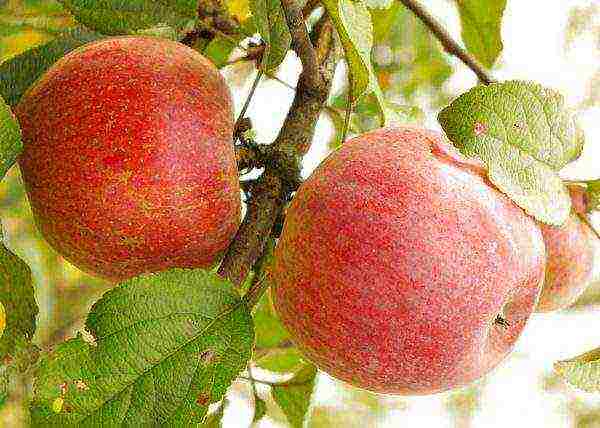
Veteran's fruits have a pleasant sourish-sugar taste and an unusual color, smoothly transitioning from bright golden to red-carmine, while burgundy strokes are clearly visible on the skin of the fruit
Table: the main features of the varieties near Moscow
In the gardens of the Moscow Region, varieties such as:
- Star;
- March;
- Orlik;
- Rozhdestvenskoe;
- Spartan.
Frost-resistant varieties for the Urals and Siberia
Gardening is not easy in cold regions. But those who do make up their minds will find the most delicious, popular and interesting varieties of winter apple trees.
- When the breeders crossed the Peach and Kungur pineapple apple trees, no one could have imagined that such an unusually tasty and winter-hardy variety like Persianka would turn out. An adult plant of medium height with a very compact crown of a regular-rounded shape.
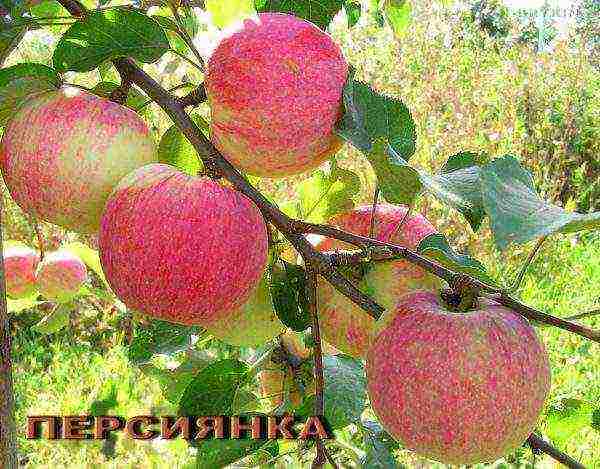
The light golden fruits of the Persians are decorated with a delicate pale reddish streaked blush, very juicy and sweet-sour to taste.
- The Bashkir handsome variety is a medium-sized tree, with a beautiful spreading crown, in the shape of a pyramid. One of the advantages of this variety is the extended period of consumption: from late autumn to early winter.
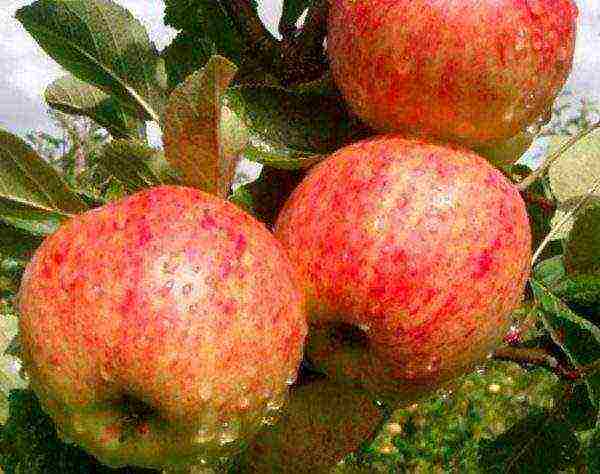
The fruits of the apple-tree Bashkir handsome man of bright carmine-red color, with beautiful strokes on a blurred background, tastes spicy-sweet with a pleasant sour aftertaste
- The high-yielding variety Bratchud can be either dwarf up to one and a half meters, and medium-sized (up to 3 m high), this feature completely depends on the stock.
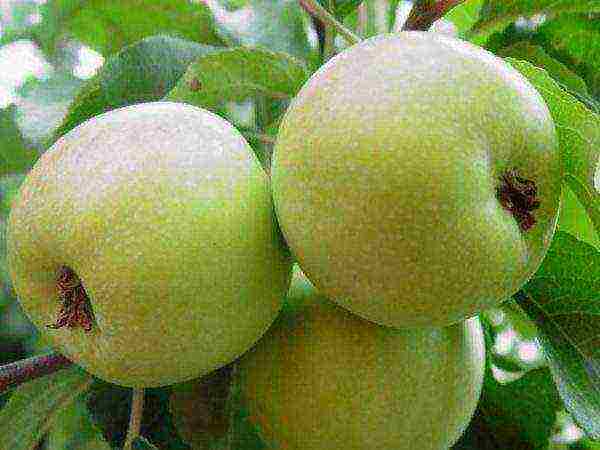
Bratchud's fruits are light green-golden with a bright burgundy-purple blush, the pulp is light and coarse-grained, sour in taste, with a light, gradually revealing sweet note
- Early winter Arkaim is a medium-sized apple tree with relatively fast growth and a dense spreading crown.

Arkaim fruits have a pleasant spicy-sour taste with a long sweet-sugar aftertaste and pleasant coloration - a beautiful transition from emerald-golden to brick-red
- The universally applicable variety Orenburgskoe later is a short tree with a fancy rounded-spreading crown, dark emerald in color.

The aromatic burgundy-red apples of the Orenburgskoye variety later combine both a juicy sweet-sour taste and good marketability
Table: unique properties of apple trees for the Urals and Siberia
For the weather conditions of the Urals and Siberia, varieties such as are also suitable:
- Symbol;
- Kibo;
- Altynai;
- North Synap;
- Bogatyr.
Winter apple trees for Belarusian gardeners
Although the western climate of Belarus is more favorable to fruit and berry trees, gardeners still need to be careful and carefully select apple varieties. For the conditions of this country, the following 5 options are ideal.
- The Vesyalina variety is a medium-sized tree with a not very dense, rounded crown.

The sour fruits of Vesyalina have a delicate sweet aftertaste and rich aroma, decorated with a rich crimson blush.
- Antey has medium-sized, slightly pubescent brownish shoots. The height of this apple tree rarely exceeds 3 m. It is interesting that the crown, with a low density, grows in tiers, therefore, it can be formed at will.
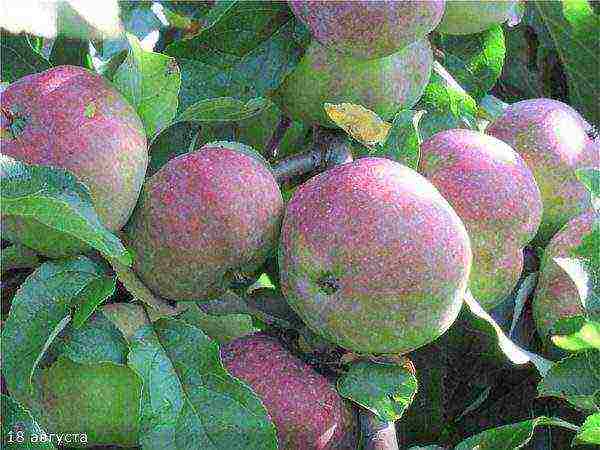
The fruits of the Antey variety are delicate emerald with a characteristic dark pink blush and a pleasantly sour taste
- The world famous Wesley, or Tartu rose, differs from other early winter varieties not only in self-fertility, but also in the extraordinary dessert taste of the fruit. The Wesley plant itself is a medium-sized tree with a spreading, rounded crown.
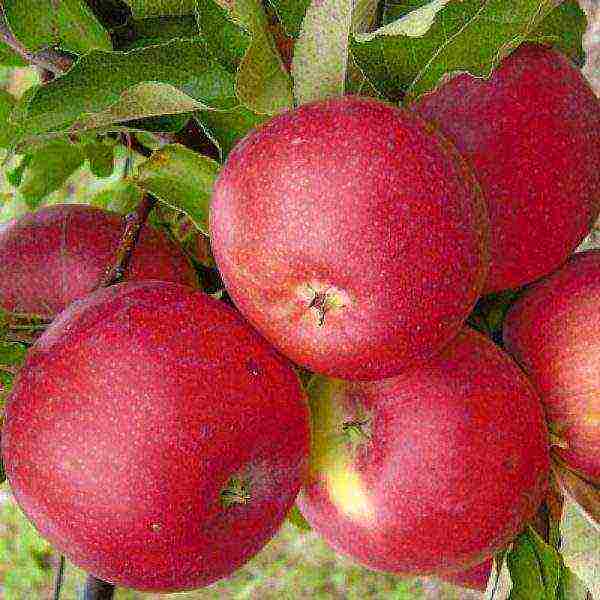
Dark-burgundy, like a ripe cherry, with a characteristic streakiness, the color of Wesley's fruits seems to turn into an extremely juicy pulp with a pleasant sourness, which has veins of a pale red hue
- The table Belarusian synap is a tall apple tree with a gorgeous sparse crown.

The color of the sour apples of the Belarusian Sinap is characterized by a smooth transition from golden-green to brick-burgundy, and the pulp is characterized by juiciness and tenderness
- The variety Belorusskoe Sweet has an average height and a beautifully drooping crown.
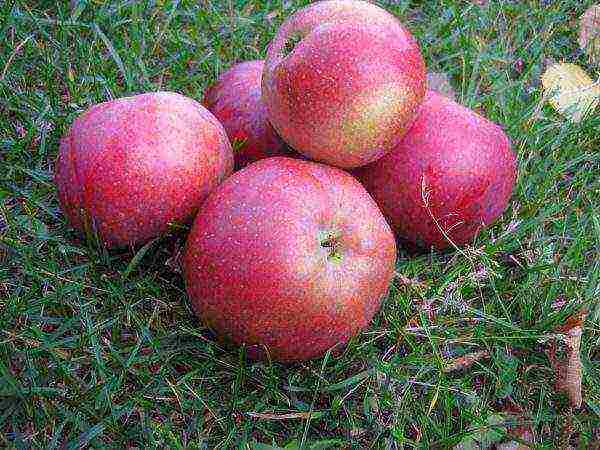
The aromatic sugar apples of the Belarusian Sweet have a beautiful wine-red color and a delicate spicy aroma.
Table: description and characteristics of varieties for Belarus
And also suitable for the weather conditions of Belarus:
- Idared;
- Sinap Orlovsky;
- Festivalnoe;
- Ranet Chernenko;
- Amicable.
Late apple varieties of Ukraine
The following apple varieties will be of interest to Ukrainian gardeners.
- The early winter variety Pepin Saffronny could well be the hero of Russian fairy tales. It is this apple tree, with its relatively low height, that has an amazing wide weeping crown of medium density.
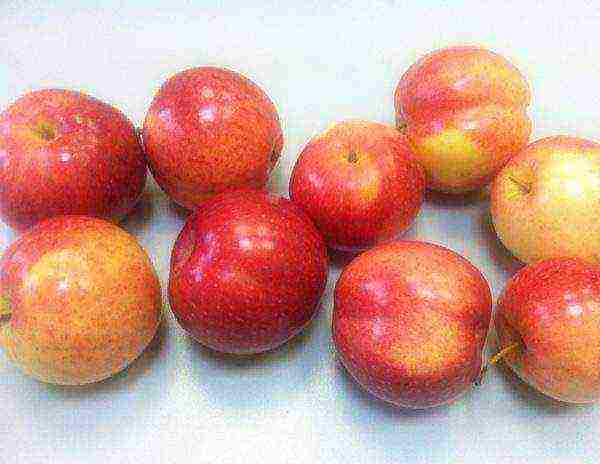
The taste of the fruits of Pepin Saffron is sweet-sugar with a light pleasant aroma, and in color - dark golden with a beautiful wine-red blush
- Student is a medium-sized tree with a rounded crown.
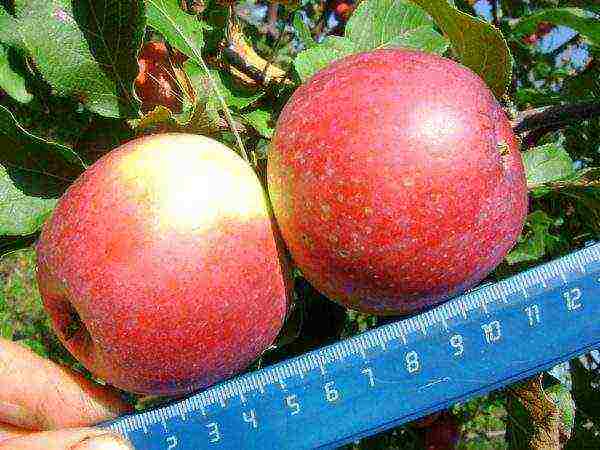
The color of apples of the Studencheskoye variety is carmine-raspberry with indistinct stripes, under the skin there is a pulp with outstanding table qualities
- One of the best commercial varieties, Idared, is good for its weather resistance. The plant itself is of medium height and has a spherical crown.
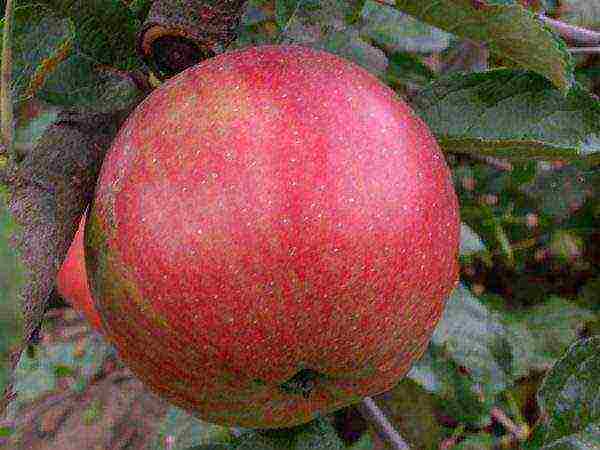
Idared apples have a wine-raspberry color with a pronounced striping and an excellent dessert taste.
- The Renet Simirenko variety is a medium-sized apple tree with a dense rounded crown. Has a high recovery rate.
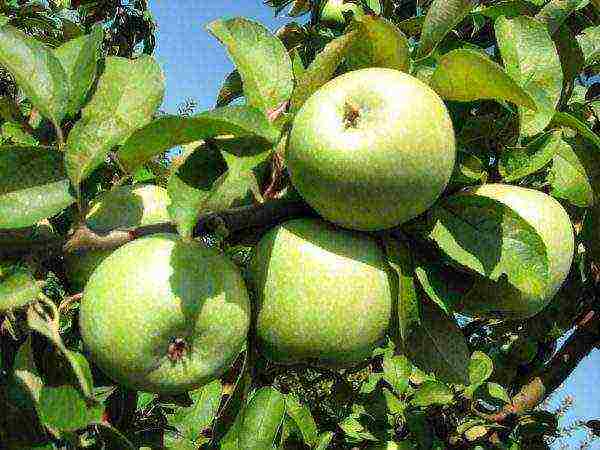
Renet Simirenko apples, tempting with their appetizing aroma, have a unique sweet-wine taste with a light hint of spice and a yellowish-light green color, with a weak red tan
- The French variety Floriana is not a very tall plant (up to 5 m) with a sparse crown.
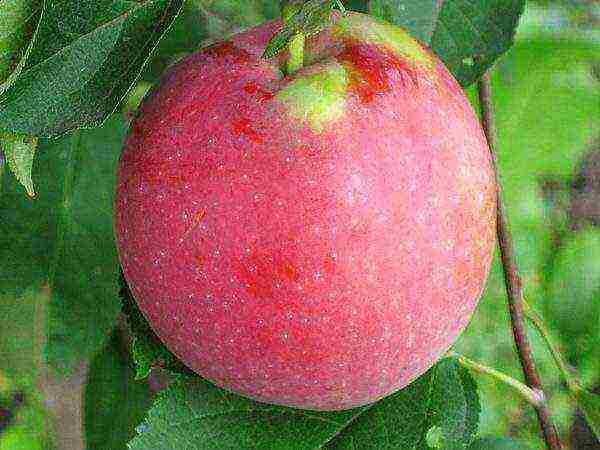
Floriana's golden-green apples are covered with a bright purple blush, decorated with shading, sweet and sour taste
Table: the benefits of fruit trees for Ukrainian orchards
And also in Ukrainian gardens you can grow:
- Lobo;
- Veteran;
- Wesley;
- Star;
- North synap.
Table: top 10 longest shelf life apples
It should be noted that the places in the top are set based on the ratio of the ripening period and the storage period of apples.
Gardeners reviews
There are many late apple trees and every gardener is able to pick up that unique variety that will delight him with its apples right up to spring. Just approach your choice seriously and deliberately, then you will not have any problems with growing fruit trees.
Hello! My name is Olga, I am studying to be an ecologist - soil scientist at the Lomonosov Moscow State University. Rate the article:
(1 vote, average: 3 out of 5)
